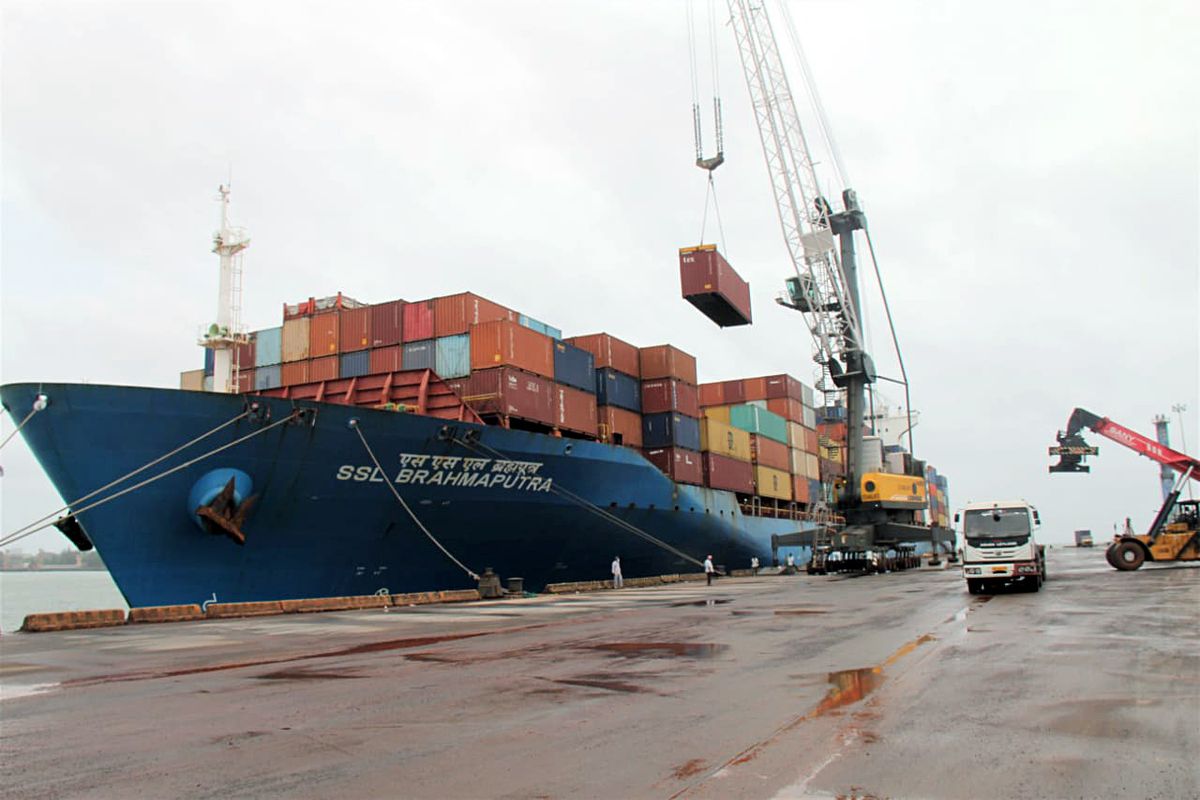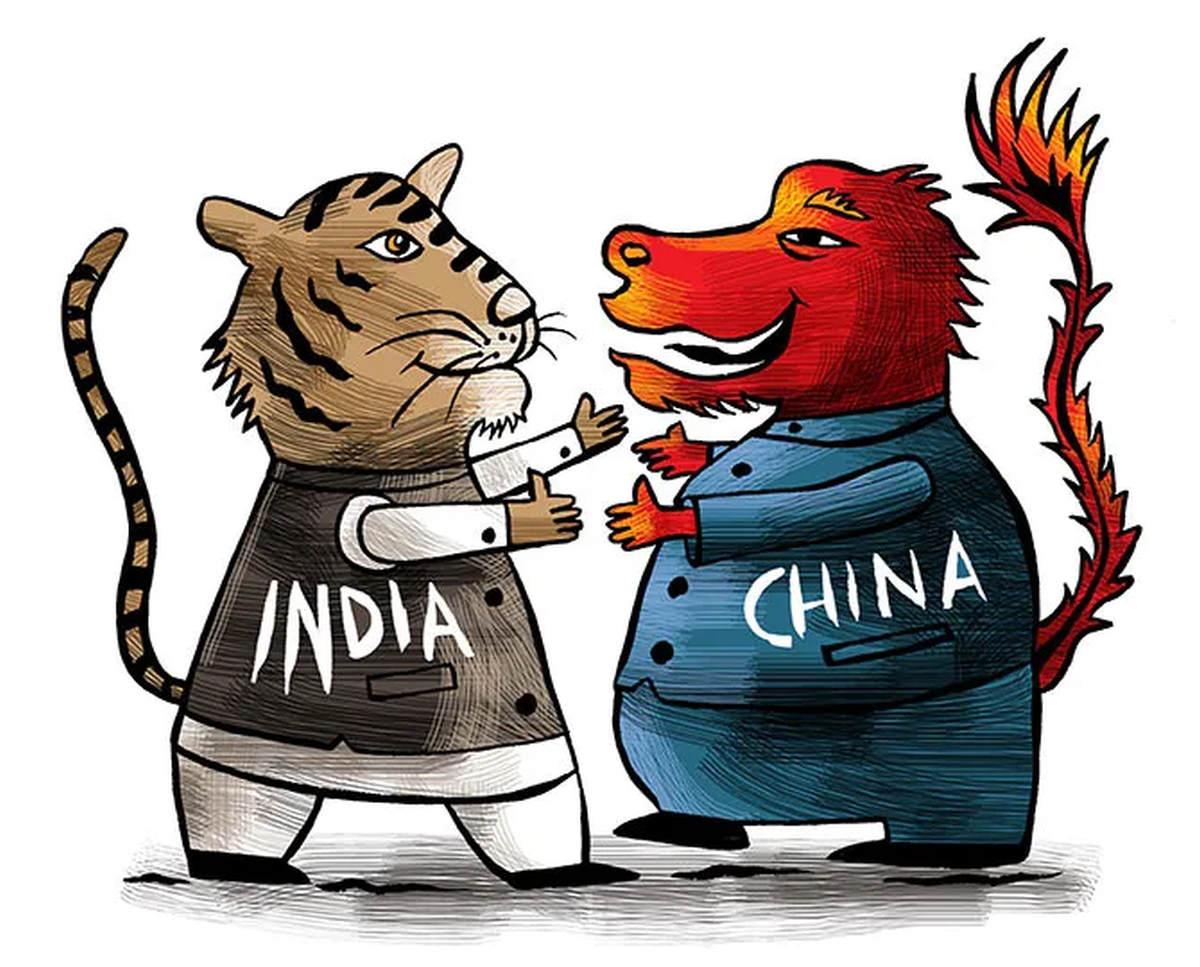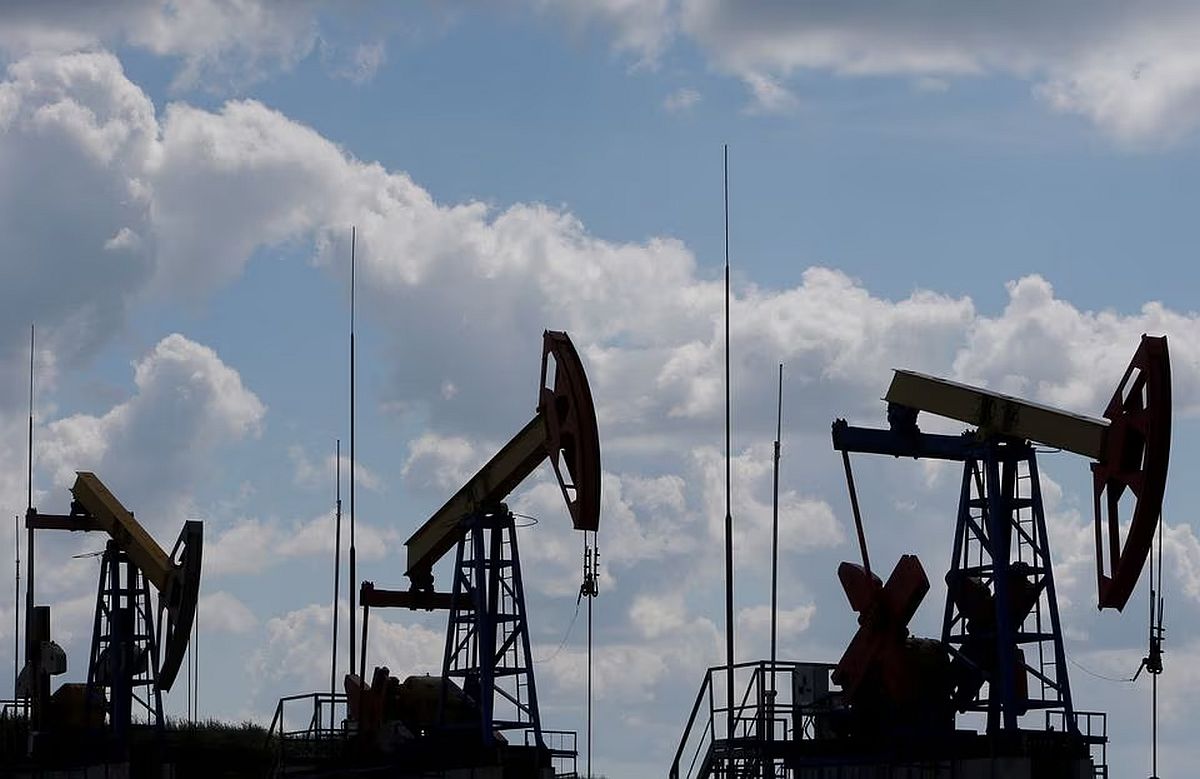India’s goods exports rebounded in July after two months of contraction, with outbound shipments rising 7.3 per cent to $37.24 billion, led by a surge in exports to the United States before the country’s reciprocal tariff kicked in and bolstered by a recovery in exports to other key markets.

Photograph: ANI Photo
However, the country’s merchandise trade deficit widened to an eight-month high of $27.35 billion as imports also picked up 8.6 per cent after two months of decline to hit a three-month high of $64.6 billion, quick estimates released by the Ministry of Commerce and Industry on Thursday showed.
Services exports grew 1.4 per cent to $31.03 billion in July, while services imports shrank 3.4 per cent to $15.4 billion, resulting in a $15.63 billion surplus.
Based on these estimates, subject to revision after the Reserve Bank of India finalises services trade numbers, India’s total exports were up 4.5 per cent in July to $68.3 billion, while imports grew 6 per cent to $80 billion.
Commerce Secretary Sunil Barthwal said at a briefing that India’s goods and services exports are doing well despite global economic uncertainties.
Exports have grown substantially, much higher than the global exports growth, he underlined.
India’s goods exports rebounded in July after two months of contraction, with outbound shipments rising 7.3 per cent to $37.24 billion, led by a surge in exports to the United States before the country’s reciprocal tariff kicked in and bolstered by a recovery in exports to other key markets.
However, the country’s merchandise trade deficit widened to an eight-month high of $27.35 billion as imports also picked up 8.6 per cent after two months of decline to hit a three-month high of $64.6 billion, quick estimates released by the Ministry of Commerce and Industry on Thursday showed.
Services exports grew 1.4 per cent to $31.03 billion in July, while services imports shrank 3.4 per cent to $15.4 billion, resulting in a $15.63 billion surplus.
Based on these estimates, subject to revision after the Reserve Bank of India finalises services trade numbers, India’s total exports were up 4.5 per cent in July to $68.3 billion, while imports grew 6 per cent to $80 billion.
Commerce Secretary Sunil Barthwal said at a briefing that India’s goods and services exports are doing well despite global economic uncertainties.
Exports have grown substantially, much higher than the global exports growth, he underlined.
The growth in merchandise exports was driven by engineering goods (up 13.7 per cent), electronics (33.9 per cent), drugs and pharmaceuticals (14 per cent), organic and inorganic chemicals (7.2 per cent) and gems and jewellery (28.9 per cent).
Non-petroleum and non-gems and jewellery exports grew 12.7 per cent to $30.51 billion.
The drivers of the growth among non-petroleum sectors were electronic goods (46.9 per cent), engineering goods (1.35 per cent), drugs and pharmaceuticals (5.9 per cent), readymade garments (1.23 per cent).
The uptick in inbound shipments was led by petroleum and crude oil imports, which make up for nearly a quarter of India’s total import bill, and rose 7.4 per cent in July to hit $15.5 billion.
Gold imports grew 13.8 per cent to $3.97 billion, while electronics imports stood at $9.8 billion, up 12.8 per cent on-year.
Fertiliser imports soared 133 per cent to $1.6 billion.
“The export growth in July was supported by the continued surge in exports to the US, that has been witnessed since the beginning of 2025, although growth in exports to the other geographies also turned positive after a gap of two months,” said Aditi Nayar, chief economist at ICRA.
“Non-oil exports drove the uptick in overall exports in July 2025, even as oil exports contracted 25 per cent as compared to the year before,” she noted.
Promoting exports
Due to an uncertain global policy environment, mainly due to the tariff policies rolled out by the US, the government is adopting a ‘clear cut strategy’ to improve export competitiveness, strengthen export promotion and push diversification of export baskets and markets.
To begin with, India is fast-tracking free trade agreements (FTAs) and reviewing existing trade agreements.
While a trade deal with the four-member European Free Trade Association (EFTA) nations will come into force from 1 October, India has reached out to the United Kingdom (UK) to fast track the implementation of the FTA by wrapping up Parliamentary procedures. Agreement with Oman has been finalised and will be signed soon.
Talks with the European Union (EU) are also being fast-tracked.
According to Barthwal, progress of the negotiations have been ‘good’ and further meetings are expected to happen at the secretary and the commerce and industry minister’s level, with their respective counterparts.
Along with the trade bloc, the government is looking to complete FTA negotiations with Chile and Peru by the end of this year.
That apart, substantial completion of the FTA review with the 10-member ASEAN nations is expected by October.
India is also expanding its focus on top 50 countries, with 90 per cent share of exports, including through mobilisation of missions abroad to undertake proactive and sustained export promotion efforts.
Further, the Export Promotion Mission (EPM), announced in the Union Budget FY26 is presently under inter-ministerial consultation.
It seeks to enable broad-based, inclusive, and sustainable export growth over six years – from FY25 to FY31 by exploring approaches beyond conventional mechanisms to address key bottlenecks faced by Indian exporters — especially Micro, Small and Medium Enterprises (MSMEs).
The EPM is anchored in a collaborative framework involving the department of commerce, MSME ministry, finance minister, and other line ministries and stakeholders.
EPM will be implemented through two sub-schemes – Niryat Prosahan, which will provide trade finance support and Niryat Disha that will drive international market access.




